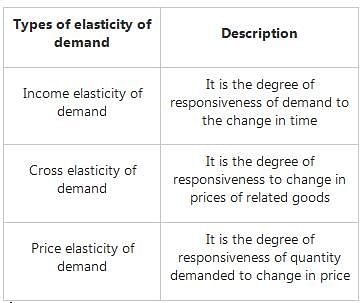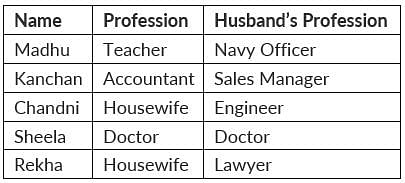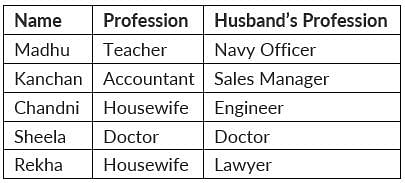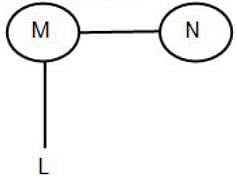EMRS Librarian Mock Test - 1 - EMRS MCQ
30 Questions MCQ Test - EMRS Librarian Mock Test - 1
Set events in chronological order in which they happened.
1. Sepoy mutiny
2. Vasco da Gama reached India
3. Babur started mughal dynasty
Which committee was set up to review the concept of the poverty line?
| 1 Crore+ students have signed up on EduRev. Have you? Download the App |
The degree of response of demand to changes in price is ________
To which of the following crops does the Rashtriya Krishi Bima Yojana (NAIS) provide insurance?
Who won the Women’s single trophy at 2023 Australian Open?
Directions: Study the following information to answer the given question.
Five Women Madhu, Kanchan, Chandni, Sheela and Rekha are married to Doctor, Naval Officer, Lawyer, Sales Manager and Engineer. The ladies are Accountant, Teacher and Doctor by Profession, while two are Housewives.
(i) One husband and Wife have the same profession.
(ii) Madhu and Kanchan are neither Housewives nor they are married to Doctor or Lawyer.
(iii) Sheela and Rekha are neither Teacher nor Accountant and their Husbands are neither the Engineer nor are in a Navy.
(iv) The Sales Manager is not Madhu’s or Chandni’s husband. His Wife is an Accountant.
(v) Rekha is not a doctor
(Vi) Chandni is not a Teacher and the Teacher’s husband is Naval officer.
Q. Who is the wife of Engineer?
Directions: Study the following information to answer the given question.
Five Women Madhu, Kanchan, Chandni, Sheela and Rekha are married to Doctor, Naval Officer, Lawyer, Sales Manager and Engineer. The ladies are Accountant, Teacher and Doctor by Profession, while two are Housewives.
(i) One husband and Wife have the same profession.
(ii) Madhu and Kanchan are neither Housewives nor they are married to Doctor or Lawyer.
(iii) Sheela and Rekha are neither Teacher nor Accountant and their Husbands are neither the Engineer nor are in a Navy.
(iv) The Sales Manager is not Madhu’s or Chandni’s husband. His Wife is an Accountant.
(v) Rekha is not a doctor
(Vi) Chandni is not a Teacher and the Teacher’s husband is Naval officer.
Q. Who among the following is engaged in Doctor’s Profession with her husband?
Directions: Study the following information to answer the given question.
Five Women Madhu, Kanchan, Chandni, Sheela and Rekha are married to Doctor, Naval Officer, Lawyer, Sales Manager and Engineer. The ladies are Accountant, Teacher and Doctor by Profession, while two are Housewives.
(i) One husband and Wife have the same profession.
(ii) Madhu and Kanchan are neither Housewives nor they are married to Doctor or Lawyer.
(iii) Sheela and Rekha are neither Teacher nor Accountant and their Husbands are neither the Engineer nor are in a Navy.
(iv) The Sales Manager is not Madhu’s or Chandni’s husband. His Wife is an Accountant.
(v) Rekha is not a doctor
(Vi) Chandni is not a Teacher and the Teacher’s husband is Naval officer.
Q. Who among the followings are Housewives?
Directions: In the following question assuming the given statements to be True, find which of the conclusion among given conclusions is/are definitely true and then give your answers accordingly.
Statements:
A > B, B > C, C = D, D < E
Conclusions:
I. B = D
II. B > D
In the following question assuming the given statements to be true, find which of the conclusion among given conclusions is/are definitely true and give your answers accordingly.
Statements:
P > Q; Q > R; R > S; S > T
Conclusions:
I. T < Q
II. R < P
Statements:
Some cows are crows.
Some crows are elephants.
Conclusions:
1. Some cows are elephants.
2. All crows are elephants.
Direction: Study the following information carefully to answer the given questions:
If 'A () B' means 'B is the mother of A'
If 'A of B' means 'B is the father of A'
If 'A ÷ B' means 'B is the sister of A'
If 'A × B' means 'B is the brother of A'
If 'A + B' means 'B is the daughter of A'
If 'A - B' means 'B is the son of A'
Q. What does 'L () M ÷ N' means?
Directions: Study the following information carefully to answer the given Questions:
P^Q-P is the child of Q
P!Q-P is the parent of Q
P*Q - P is elder to Q
P#Q-P is younger to Q
P@Q-P is brother of Q
P&Q - P is wife of Q
P+Q-P is sister-in-law of Q
Q. If P*Q^R@S#T*P, the age of Q is 22 years and age of T is 33 years, so what can be the age of P?
What is the shortcut key to add content on the clipboard to your document in MS PowerPoint?
In Windows operating system what happens upon pressing Alt and F4 simultaneously?
Usually, the file system used by Windows 95 is _______.
In which one of the following states do children become members of their peer group?
Learners display individual differences. So, a teacher should
Which of the following is an objective type of question?
To encourage achievement motivation in the classroom, students should be taught to attribute their good grades through
You are a teacher and after preparing question paper you check, whether the questions test specific testing objectives. He is concerned primarily about the question paper’s
























